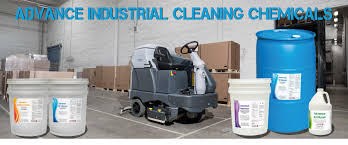Industrial cleaning plays a critical role in maintaining safety, efficiency, and regulatory compliance across industries like manufacturing, healthcare, food production, and energy. Clean facilities reduce the risk of accidents, contamination, and machinery failure, ensuring smooth operations. However, industrial cleaning comes with its own unique set of challenges, making it essential to adopt cutting-edge solutions for better results.
Common Challenges in Industrial Cleaning
Efficient cleaning in industrial environments is no easy feat due to the diverse challenges involved. Here are some of the most common hurdles businesses face:
- Large-Scale Operations: Cleaning expansive areas with complex layouts requires significant time and resources.
- Tough Contaminants: Industrial settings often deal with heavy grease, grime, chemical residues, and other stubborn materials that are difficult to remove.
- Compliance with Regulations: Strict hygiene and safety standards demand frequent and thorough cleaning to avoid hefty penalties.
- Downtime Concerns: Interruptions to production schedules for cleaning can result in costly downtime.
- Environmental Impact: Finding cleaning solutions that are both effective and eco-friendly is a growing concern in today’s sustainability-driven marketplace.
Addressing these challenges demands innovative and efficient cleaning solutions tailored to industrial needs.
Efficient Cleaning Solutions
Advancements in tools, technologies, and methods are transforming industrial cleaning, offering superior solutions to traditional practices. Below are the most notable innovations:
1. Automated Cleaning Systems
Robotic cleaning solutions are changing the game. These systems are designed to clean hard-to-reach areas without the need for excessive manual labor. Robotic scrubbers and pressure washers can handle complex areas with minimal human intervention, reducing both time and effort.
2. High-Pressure Cleaning Equipment
High-pressure jet systems are ideal for removing stubborn grime, grease, and other contaminants from machinery and surfaces. They offer precision cleaning with minimal water usage, making them both effective and environmentally friendly.
3. Dry Ice Blasting
Dry ice blasting—a non-abrasive and chemical-free cleaning method—uses CO₂ pellets to remove contaminants without damaging surfaces. It’s particularly effective for heavy machinery and electrical components that conventional cleaning might compromise.
4. Ultrasonic Cleaning Technology
Ultrasonic cleaning uses high-frequency sound waves to create microscopic bubbles that effectively clean intricate parts. This method is perfect for small, delicate machinery components that require thorough, damage-free cleaning.
5. Eco-Friendly Cleaning Agents
Environmentally friendly cleaning products, developed by custom chemical formulation manufacturers, are designed to minimize harmful chemical residues while maintaining superior cleaning power. These solutions meet regulatory standards and help businesses meet their sustainability goals.
Benefits of These Solutions
- Cost-Efficiency: Automation, reduced downtime, and optimized cleaning processes lead to significant cost savings.
- Improved Safety: Non-toxic cleaning agents and automated systems minimize human exposure to harmful substances.
- Consistency: Advanced methods ensure thorough and consistent cleaning results every time.
Tips for Optimizing Industrial Cleaning Operations
- Conduct a Needs Assessment: Evaluate your current cleaning processes to identify bottlenecks or inefficiencies.
- Invest in Training: Properly train your team to use advanced cleaning equipment and adhere to protocols.
- Leverage Technology: Explore automated and AI-driven cleaning tools to optimize time and resources.
- Schedule Smartly: Implement cleaning schedules that align with production downtimes to minimize business disruption.
- Adopt Sustainable Practices: Transition to eco-friendly products and methods that save water and reduce harmful emissions.
- Monitor Results: Regularly review cleaning outcomes to identify areas for improvement and ensure compliance with industry regulations.
Conclusion
Industrial cleaning is integral to ensuring safety, productivity, and compliance in any operational environment. While challenges such as scale, resilience of contaminants, and sustainability concerns persist, adopting efficient cleaning solutions like automated systems, eco-friendly agents, and cutting-edge technologies can make all the difference.
